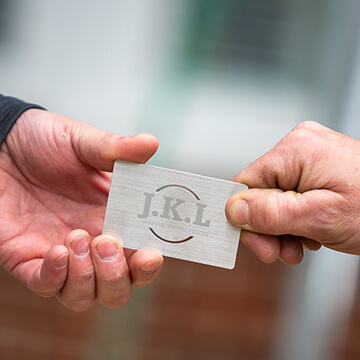Working at height is one of the most hazardous aspects of construction, and scaffolding plays a vital role in ensuring that workers can do their jobs safely and efficiently. Whether you’re a project manager, builder, or property owner, it’s crucial to understand the latest scaffolding regulations in London to ensure legal compliance and uphold the highest levels of site safety.
As one of the most trusted scaffolding contractors in Kent and the Southeast, J.K.L Scaffolding Services provides reliable, regulation-compliant scaffolding solutions for residential, commercial, and industrial projects.
Connect with our team via phone at 0800 061 4800 or email at info@jklscaffolding.co.uk for a detailed discussion and to schedule a site survey at your convenience.
Your project deserves safe, secure, and fully compliant scaffolding. Trust J.K.L. Scaffolding Services for expert solutions that meet London's strict regulations—built with precision, delivered with care.
This guide offers a clear overview of the current scaffolding health and safety regulations, focusing on what you need to know in 2025, from installation to inspection and maintenance.
Role Of Scaffolding Regulations In Construction
The role of scaffolding regulations in construction is to protect both workers and the general public. These regulations provide a legal framework that maintains construction safety when temporary structures are used during building, repair, or maintenance projects.
In London, these rules are especially critical due to the high density of urban environments and the proximity of worksites to public footpaths, roads, and neighbouring buildings. Following London scaffolding laws helps minimise risk, prevent accidents, and avoid legal issues that can delay or halt your project.
Scaffolding compliance and safety are not just about putting up poles and platforms—it’s about planning, executing, and maintaining structures that meet national safety standards and local regulations.
Basic Scaffolding Regulations You Must Follow
Understanding the basic scaffolding regulations is essential for any construction or renovation project. Here are key points to consider:
1. Scaffold Requirements
Before erecting any scaffold, you must conduct a thorough scaffolding risk assessment. This process identifies potential hazards and puts control measures in place to protect workers and the public. Every scaffold design must meet specific requirements, including proper loading capacities, fall prevention systems, and secure anchorage.
2. Scaffold Erection Guidelines
Scaffolding must be erected, altered, and dismantled by competent professionals who follow strict scaffold erection guidelines. These guidelines ensure scaffolds are built on firm foundations, adequately braced, and fitted with guardrails and toe boards where necessary. Only trained individuals should handle scaffold erection, following the manufacturer’s instructions and industry best practices.
3. Scaffold Permit
In London, if scaffolding is erected on or over a public highway or pavement, a scaffolding permit is required from the local council. This is essential for legal compliance, and failure to obtain the proper permit can result in fines or legal action. Always check with your borough council before starting work.
4. Worker Training And Access
Anyone working on or around scaffolding must receive appropriate training. Safe access and egress points must be provided, and ladders or stair towers should be securely installed. These rules fall under broader building regulations and help support overall scaffold safety.
Inspections And Maintenance For Scaffolding Safety
Regular checks are a legal requirement and a practical necessity. Inspections and maintenance for scaffolding safety ensure any issues are identified and addressed before they lead to accidents.
Scaffold Inspection Requirements
According to scaffold inspection requirements, scaffolding must be inspected:
- Before first use
- Every 7 days during use
- After any event that could affect its stability (e.g., strong winds, structural adjustments, or impact damage)
These inspections must be carried out by a competent person and recorded in a scaffolding checklist to maintain proper documentation and proof of safety standards being upheld.
Maintenance Best Practices
Scaffolds should be free of debris, water accumulation, or materials that could create slipping hazards. Damaged or worn components must be replaced immediately. Proper maintenance is key in ensuring scaffold safety throughout the project lifecycle.
Contact JKL Scaffolding
Planning For Compliance In 2025
In 2025, compliance with updated temporary structure regulations is more important than ever. Planning enforcement and increasing focus on construction safety are vital.
Ensure your scaffolding risk assessment is current and tailored to the specific environment and scope of work. Liaise with qualified professionals to interpret and apply new updates in scaffolding regulations London authorities might implement, especially in conservation areas or sensitive sites.
Many London boroughs are now requesting more detailed safety and logistics plans as part of the scaffold permit process. This trend will likely continue, so working with experienced scaffold contractors who can handle the paperwork and ensure full legal compliance is worthwhile.
Why It All Matters
Non-compliance with London scaffolding laws can lead to serious consequences—fines, project delays, or workplace accidents. Adhering to scaffold requirements and ensuring that every phase of the scaffolding process is aligned with current safety standards will protect your workers, the public, and your reputation.
As London continues to grow and construction demands increase, so does the need for stringent oversight. Whether building up, renovating a heritage property, or managing a complex commercial project, understanding the scaffolding regulations is a non-negotiable part of successful project management.
Final Thoughts
At J.K.L Scaffolding Services, we don’t just provide scaffolding—we ensure full compliance with scaffolding regulations in London and across the Southeast. Our experienced team of scaffolders is dedicated to delivering safe, reliable, and regulation-ready solutions for projects of all sizes. From initial planning and scaffolding risk assessment to meeting strict scaffold inspection requirements, we take every step seriously to keep your site safe and compliant with the latest temporary structures regulations. Whether you’re managing domestic scaffolding in Kent or a commercial project in Maidstone, our tailored approach guarantees scaffolding that meets your needs and all current scaffold requirements.
Contact us to bring industry expertise, regulatory knowledge, and a commitment to scaffolding compliance and safety—so your project always stays on track.


